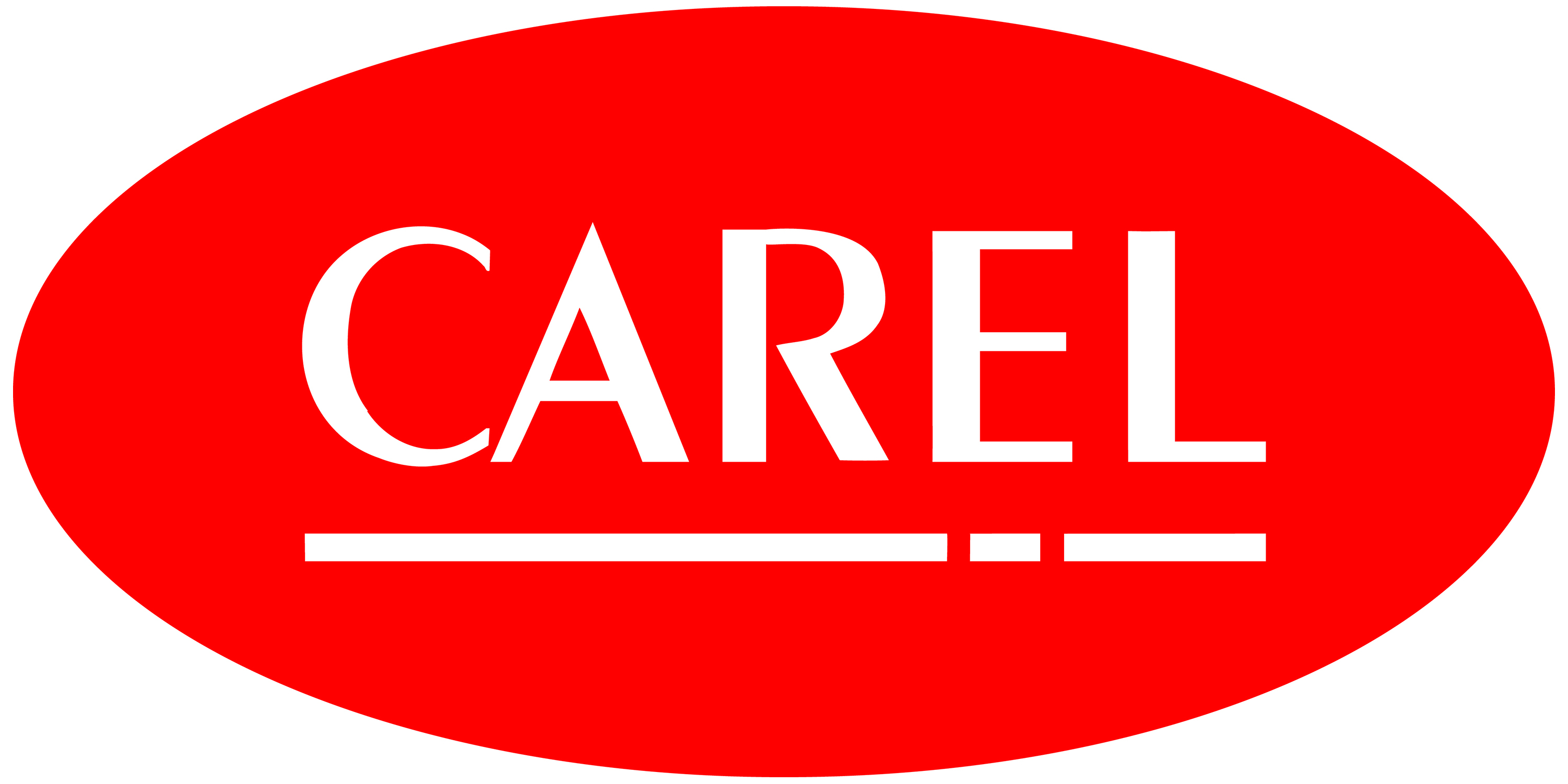Intervista Alberto Catullo e Martino Manfrin
"The main objective was to improve our service and our ability to offer added value to our American customers."
When and why was it decided to open a production plant in the U.S.A.?
Catullo: the idea to open a manufacturing site in Manheim, Pennsylvania in 2003 was based on several considerations. Firstly, there was only limited space available at CAREL U.S.A.'s previous address (in the nearby city of Lancaster). Back then, CAREL U.S.A. already handled the final configuration of some of our humidifiers, as well as storing the CAREL controllers sold in the United States. On a more strategic level, the main objective was to improve our service and our ability to offer added value to our American customers, specifically with the aim of improving lead times (an extremely important issue for customers), without however having to manage large warehouses. We were also aware that certain tenders (especially government ones) required products in which most of the value was generated in the United States, in accordance with policies aimed at growing domestic manufacturing. A production plant in the U.S.A. also responded to the company’s vision of eventually having a production unit on every continent, with the aim of creating resilient operations, the value of which was evident during the recent pandemic. Obviously, underlying these specific reasons, there was also a general expectation of being able to quickly gain a significant market share in the Americas. 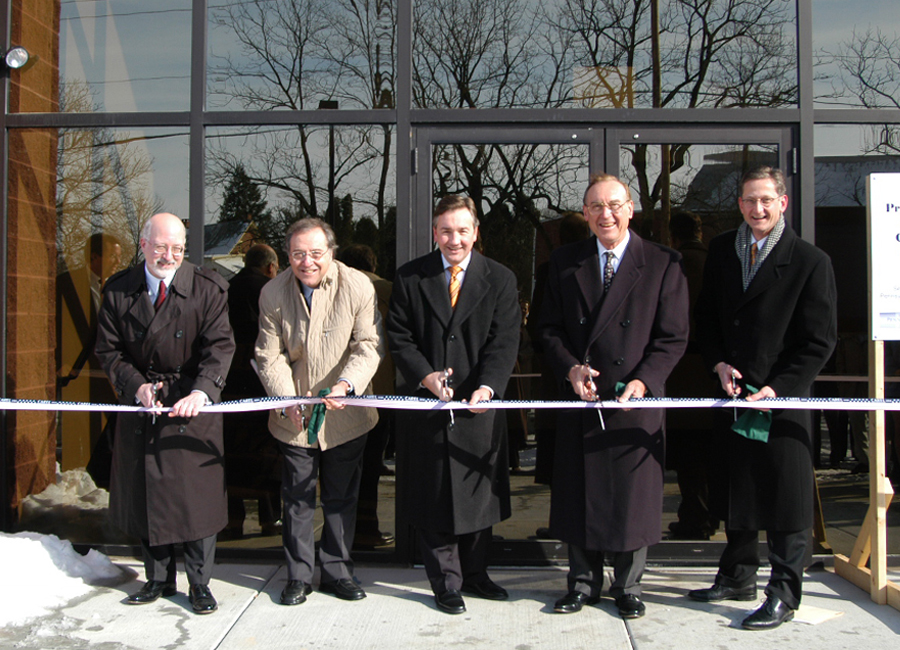 The plant was inaugurated in December 2003, in the presence of local government officials, representatives of the EDC (Economic Development Company of Lancaster County), our employees, and some customers and suppliers. Luigi Rossi, Luigi Nalini, and Umberto Bianchini all attended the inauguration ceremony. Despite the cold temperature, it was a warm occasion, celebrating the completion of the plant and the challenges we had set ourselves for the future.
The plant was inaugurated in December 2003, in the presence of local government officials, representatives of the EDC (Economic Development Company of Lancaster County), our employees, and some customers and suppliers. Luigi Rossi, Luigi Nalini, and Umberto Bianchini all attended the inauguration ceremony. Despite the cold temperature, it was a warm occasion, celebrating the completion of the plant and the challenges we had set ourselves for the future.
When and why was it decided to open a production plant in China?
Manfrin: CAREL Suzhou was established in spring 2005; prior to that date, CAREL operated in China through a sales office in Hong Kong, and a representative office in Shanghai. CAREL began marketing its products in China in the early 1990s, through two distributors: Honeekar in Hong Kong and Teu H Sin in Taipei, Taiwan. At that time, China was experiencing double-digit growth, in all sectors of the economy, from construction to transport and above all in industry in general. 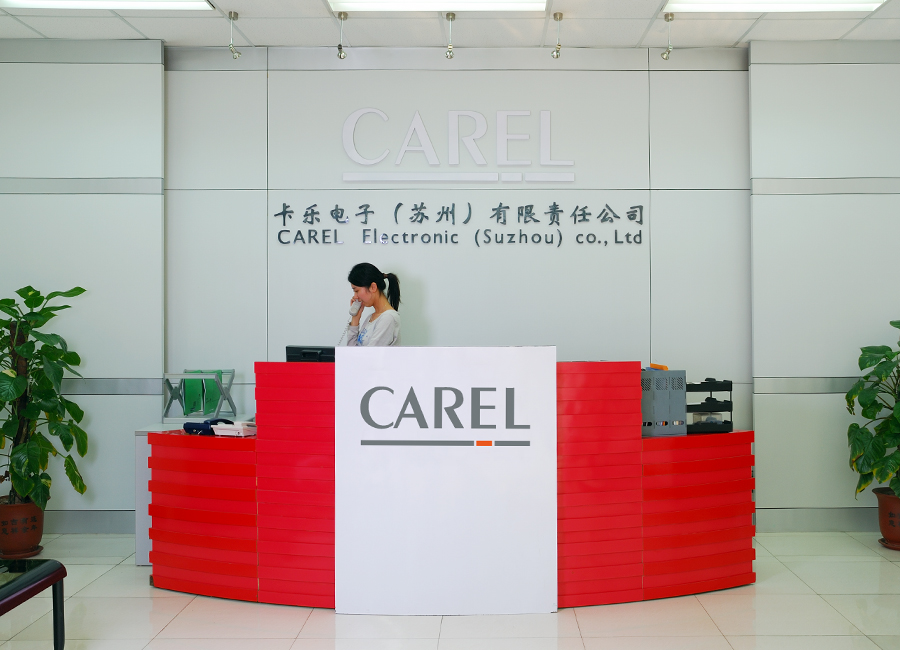 China was being transformed, across a single generation, from a purely agricultural country into the world's second economic power, first competing in and then dominating strategic sectors of the world economy, such as consumer electronics and semiconductors. In the late 1990s and early 2000s, our European and American customers had started investing directly in China, opening manufacturing sites, especially in the Yangtze River delta area around Shanghai. So it was important for us to support our main customers of the time, entering and becoming competitive in a rapidly expanding market.
China was being transformed, across a single generation, from a purely agricultural country into the world's second economic power, first competing in and then dominating strategic sectors of the world economy, such as consumer electronics and semiconductors. In the late 1990s and early 2000s, our European and American customers had started investing directly in China, opening manufacturing sites, especially in the Yangtze River delta area around Shanghai. So it was important for us to support our main customers of the time, entering and becoming competitive in a rapidly expanding market.
What were the main critical issues that needed to be addressed?
Catullo: many of the critical issues we had to face originated from the fact that the new plant required the complete internationalisation of the "CAREL system" of the time, which until then had been mostly based on the physical proximity of the different processes (and companies) around Brugine. While commercially we had long since expanded outside our national borders, this had not yet happened as regards the Operations and Product Development processes. 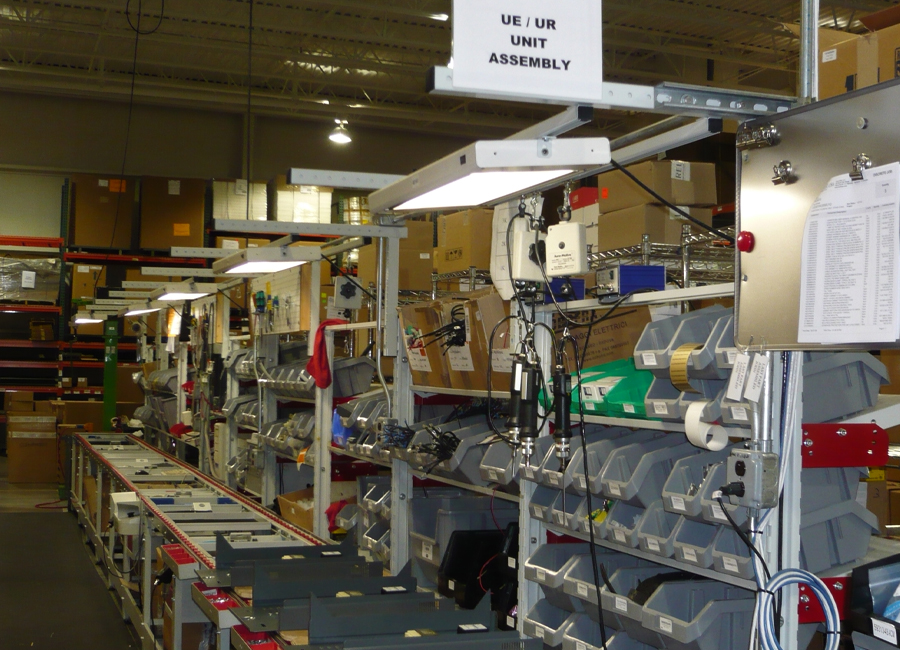 In those company areas, everyone continued to speak the same language, shared the same culture, and in technological terms were able to have a wired connection to existing computer systems. The Manheim plant required the adaptation of the CAREL system to a global context. This meant introducing an intercontinental multi-site ERP, restructuring the Quality System, standardising the Operations and Product Development processes and, to a certain extent, the HR and Accounting processes, all in a new language, with new rules, and a new culture. For those who experienced this first-hand, Manheim was not "just" a new plant, rather it enabled CAREL's globalisation: indeed, it was probably an important training ground for solving the issues we faced at the next plant in China.
In those company areas, everyone continued to speak the same language, shared the same culture, and in technological terms were able to have a wired connection to existing computer systems. The Manheim plant required the adaptation of the CAREL system to a global context. This meant introducing an intercontinental multi-site ERP, restructuring the Quality System, standardising the Operations and Product Development processes and, to a certain extent, the HR and Accounting processes, all in a new language, with new rules, and a new culture. For those who experienced this first-hand, Manheim was not "just" a new plant, rather it enabled CAREL's globalisation: indeed, it was probably an important training ground for solving the issues we faced at the next plant in China.
Manfrin: the first enterprises that invested in China (1980s and 1990s) operated through joint ventures with local companies, so as to reduce barriers to entry, such as local language and culture, yet at the same time creating well-known intellectual property problems. In December 2001, China joined the WTO, thus allowing foreign companies to set up firms with 100% overseas capital, the "WFOE" (Whole Foreign Owned Enterprises), in specific industrial sectors permitted by the central government. CAREL decided not to set up a joint venture, and we followed the more difficult option, yet the more far-sighted, as has always been the case at CAREL. 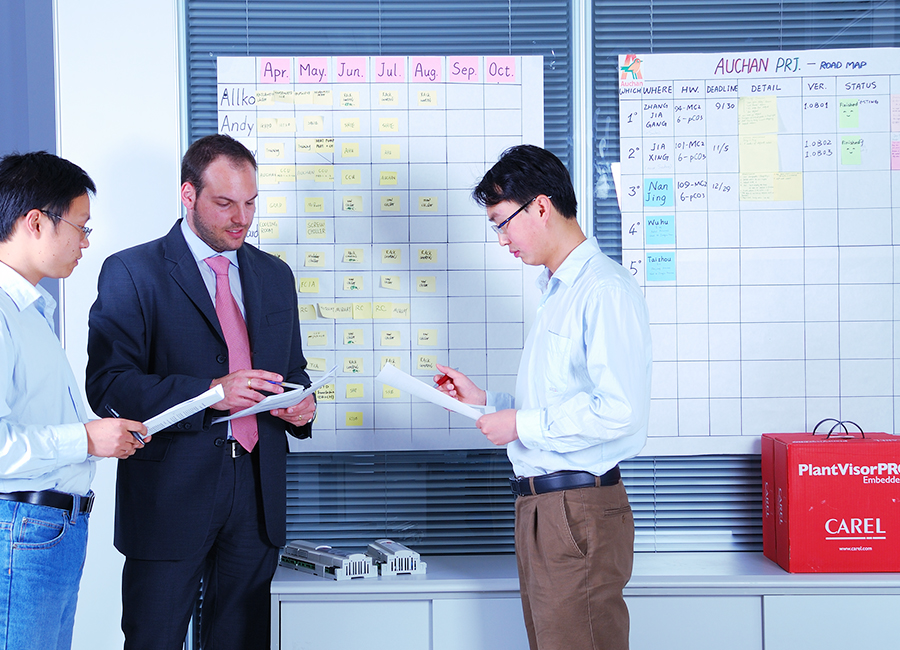 Without the support of a local Chinese company, we started from scratch, we had to look for the most suitable site to start operations (the local government made unfinished industrial buildings available for rent), make it operational (utilities systems, installation, and final decoration in production areas and offices), purchase all the production equipment (the same as those used in Italy, with the same level of assembly automation), and develop an ERP system customised to local needs (regarding finance, production, commercial). One step at a time we managed to build a team of people capable of making the company grow rapidly, and I am very proud to say that many of them are still with us and have grown together with CAREL. Thanks to the excellent work done by the local team and the support provided by CAREL Italy, in just a few months we managed to start the production of electronics controllers in China (the company was founded in May 2005, with assembly of the first product completed in September of the same year).
Without the support of a local Chinese company, we started from scratch, we had to look for the most suitable site to start operations (the local government made unfinished industrial buildings available for rent), make it operational (utilities systems, installation, and final decoration in production areas and offices), purchase all the production equipment (the same as those used in Italy, with the same level of assembly automation), and develop an ERP system customised to local needs (regarding finance, production, commercial). One step at a time we managed to build a team of people capable of making the company grow rapidly, and I am very proud to say that many of them are still with us and have grown together with CAREL. Thanks to the excellent work done by the local team and the support provided by CAREL Italy, in just a few months we managed to start the production of electronics controllers in China (the company was founded in May 2005, with assembly of the first product completed in September of the same year).
"Our European and American customers had started investing directly in China [...] it was important for us to support them, entering and becoming competitive in a rapidly expanding market."
Was it difficult to build a reliable supply chain?
Catullo: it wasn’t easy. As I mentioned previously, the company's focus at the beginning was on localising and manufacturing humidifiers. The difficulties did not so much involve finding competent and interested suppliers, but rather having competitive prices. While we had the opportunity to buy components from the Group's suppliers in Europe (especially in Italy at the time) at prices that reflected the volumes purchased by the CAREL Group, volumes in the American market were obviously much lower, especially in the first few years. 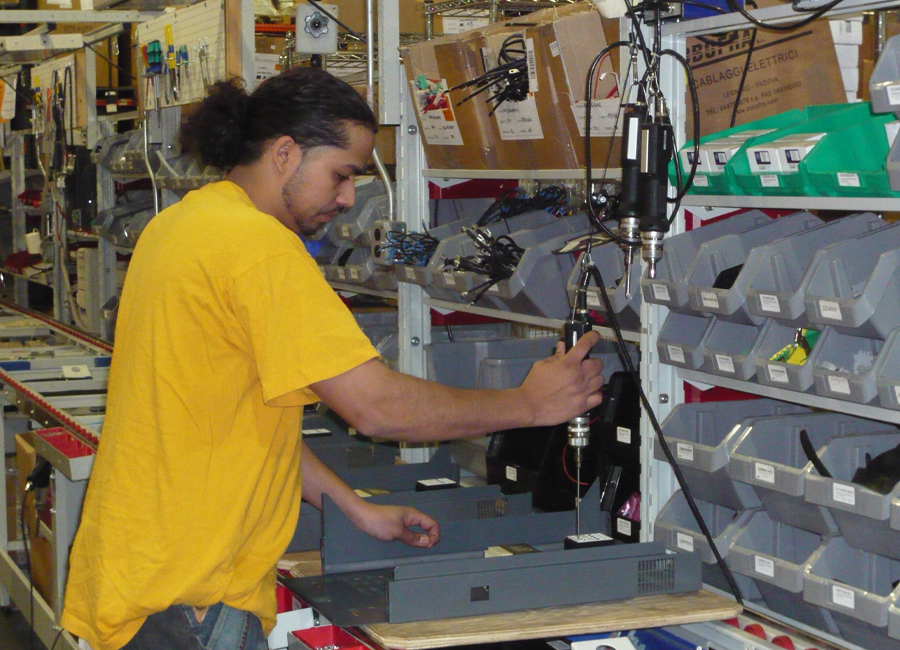 Another problem was the need to find components based on an Italian design, conceived according to the metric system and with European certifications. On one hand, asking for identical components meant requiring suppliers to handle material they do not commonly deal with. On the other, converting our products to be able use commonly-available components on the American market required a major "conversion" effort. Local certifications needed to be managed, such as UL for example, as well as others, specifically product by product, given that only later did they become an integral part of the CAREL Group's in-house product development processes. The combination of these factors certainly slowed down the localisation of the supply chain.
Another problem was the need to find components based on an Italian design, conceived according to the metric system and with European certifications. On one hand, asking for identical components meant requiring suppliers to handle material they do not commonly deal with. On the other, converting our products to be able use commonly-available components on the American market required a major "conversion" effort. Local certifications needed to be managed, such as UL for example, as well as others, specifically product by product, given that only later did they become an integral part of the CAREL Group's in-house product development processes. The combination of these factors certainly slowed down the localisation of the supply chain.
Manfrin: the Suzhou area offered, and I believe still offers, an extensive supply chain with highly-specialised companies in areas such as electronic board assembly and testing, plastic moulding, aluminium die casting and extrusions, metal sheet carpentry and precision machinery. 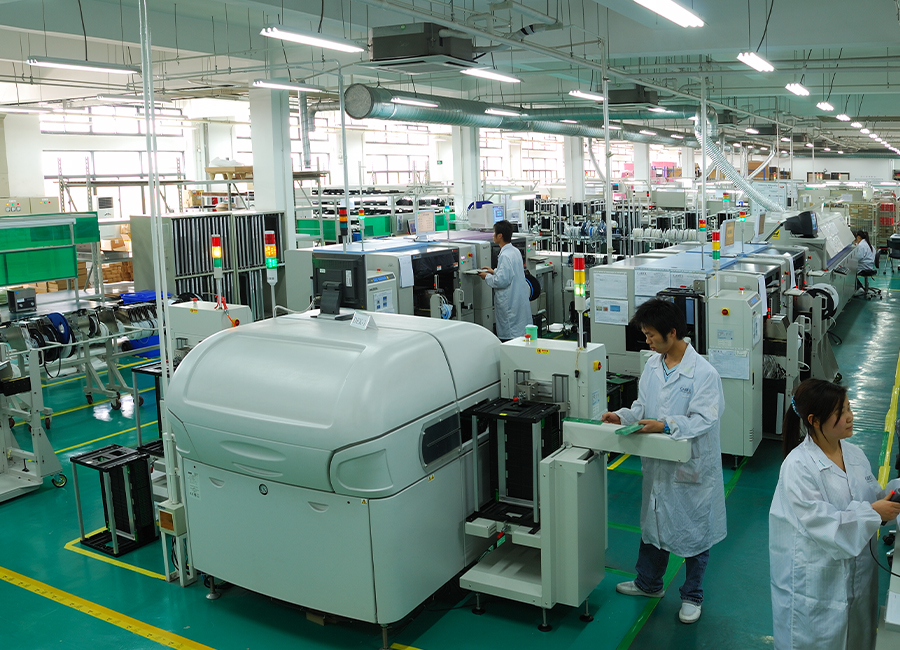 When CAREL Suzhou was established (2005), around 80% of all electronic boards for laptop and desktop computers worldwide were manufactured in the area, in industrial plants employing over 50,000 workers. Moreover, well-known consumer electronics brands (both Japanese and Korean) had their main production facilities in Suzhou. Essentially, there was no shortage of suppliers, however our greatest difficulties were getting attention and priority on deliveries from the main suppliers, and then guaranteeing their quality. Our steady growth in Asia and other parts of the world enabled us to reach the volumes needed to strengthen our industrial structure in China.
When CAREL Suzhou was established (2005), around 80% of all electronic boards for laptop and desktop computers worldwide were manufactured in the area, in industrial plants employing over 50,000 workers. Moreover, well-known consumer electronics brands (both Japanese and Korean) had their main production facilities in Suzhou. Essentially, there was no shortage of suppliers, however our greatest difficulties were getting attention and priority on deliveries from the main suppliers, and then guaranteeing their quality. Our steady growth in Asia and other parts of the world enabled us to reach the volumes needed to strengthen our industrial structure in China.
What were the first products to be made at the new plant?
Catullo: before opening the new plant, CAREL U.S.A. had already worked on assembling the MC2000, an American variant of the MC adiabatic system, and ultimateSteam, a locally-designed product for the distribution of pressurised steam, quite a common solution in the U.S.A. The first new product to come out of the new Manheim factory was homeSteam, a version of the UE model adapted to suit residential or light commercial applications. Over the next few years we began manufacturing the UE and UR products, starting with the models that had the most components in common and obviously the highest volumes, then progressively expanding production to cover most of the range.
Manfrin: I clearly remember when the first PJ32 unit rolled off the first production line in China; it was a proud moment for everyone at CAREL, the first CAREL electronic controller to be assembled outside of Italy. The PJ32 was a popular product for commercial refrigeration, and we chose it because its manufacturing complexity was manageable for the new team, and because refrigeration was a rapidly-growing market in Asia.
How has the production plant evolved over time?
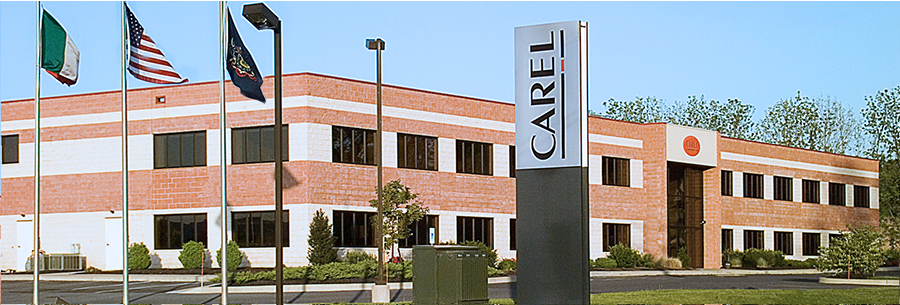
Catullo: in the period immediately after the construction of the new plant, the goal was to concentrate shipments of raw materials and semi-finished products in containers, to be shipped by sea from European suppliers or from the Italian plant, and then handle assembly, final configurations and testing at the new US plant. In the medium to long term, however, the target was to localise production and the supply chain as much as possible. The launch of locally-made homeSteam, UE, and UR units was followed by humiFog, and then compactSteam, another product specifically designed for the US residential market, based on the experience gained with homeSteam. Co-developed between Manheim and Brugine, this humidifier was initially produced at the Chinese plant in Suzhou and then locally in Manheim so as to shorten the supply chain and reduce transport costs. It's also worth mentioning the local development and production of ultimateSAM, an evolution of the ultimateSteam, designed to support growth in the pressurised steam distribution application. These solutions were developed with the valuable contribution of the local R&D team. We then also started to approach electronic controllers, shifting some final configuration or customisation phases for American customers of our programmable controllers to the Manheim plant. We also purchased equipment for graphic customisation of our controllers, optimising warehouse management as it allowed us to import neutral plastic components in high volumes, and then customise them in Manheim according to the requirements of local customers. Other important localisations regarding the electronics then followed in the years after I left and was replaced by Martino Manfrin (currently Chief Sales and Marketing Officer North America).
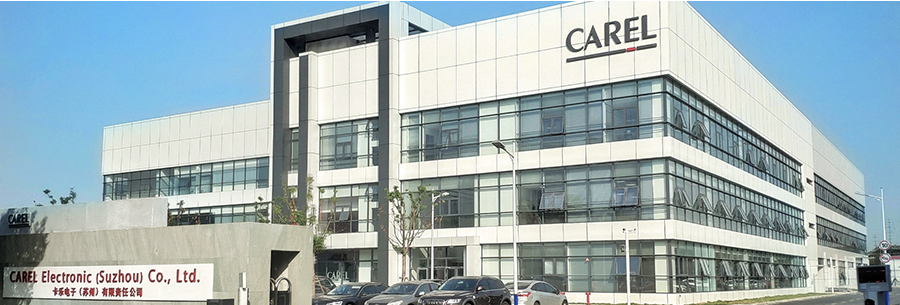
Manfrin: CAREL Suzhou grew very rapidly over the first few years. In 2009, we already had nearly 200 employees, with 3 SMT assembly lines, 6 PTH assembly lines and one humidification assembly line for humidifiers. In addition to the production plant, we had also begun developing our Chinese sales structure, opening representative offices in what were our most strategic areas, such as Shanghai, Guangzhou and Beijing. After the first few years, we began to pay close attention to the innovations that were taking hold in China, and developed our first reverse-innovation product: the µPC, based on ideas coming out of China. We also invested considerably in software development, especially regarding the application software, to meet the different needs of the Chinese market. Little by little we then began our first "electronic controller design experiments" in China, developing "derived products", such as the PJ30A and the PGDsmall, products developed based on the Italian design yet modified for the demands of the local market.
